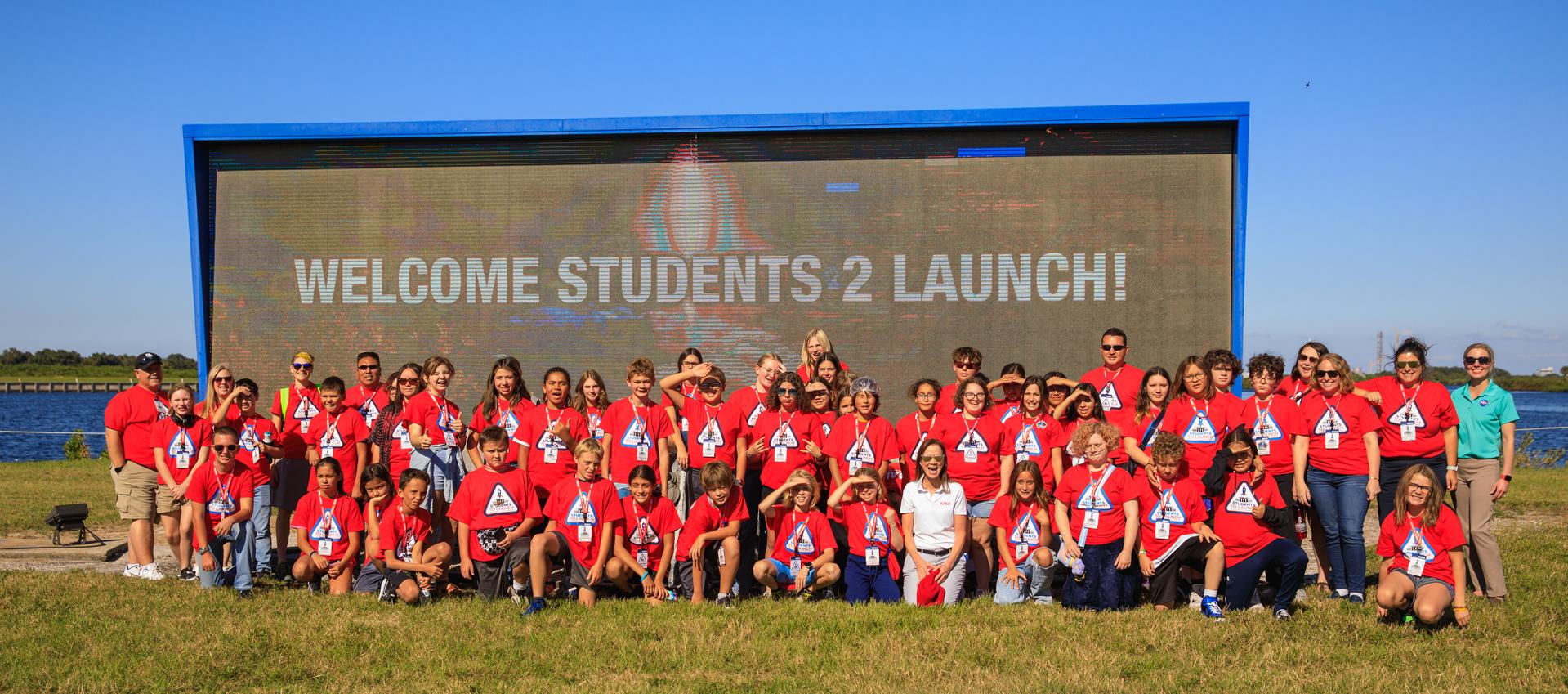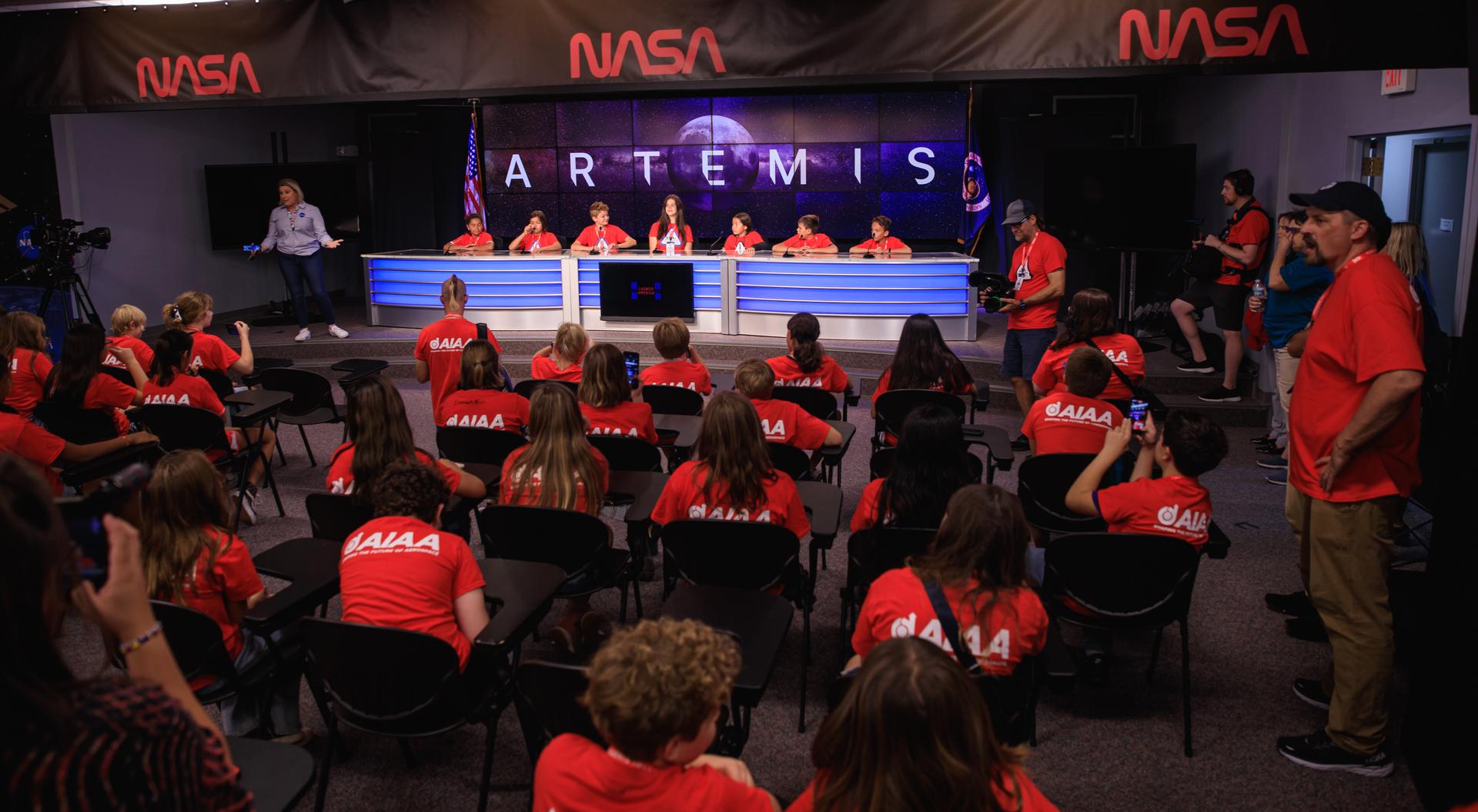
By Linda Herridge and Leah Martin
NASA’s John F. Kennedy Space Center
Amazing. Surreal. Outstanding. These are just a few words used by a group of students from Students to Launch as they described the experience of visiting NASA’s Kennedy Space Center in Florida this year.
The Students to Launch program has given more than 140 middle schoolers from Florida, Montana, Texas, and Connecticut the opportunity to visit Kennedy in 2022 and view a launch in person. While at the spaceport, students also were able to engage in hands-on STEM exercises and participate in activities such as touring the center and facilities, sitting in on simulated media conferences, visiting the Kennedy Space Center Visitor Complex, and most exciting of all, viewing a launch from up close.
“There’s nothing that ignites curiosity and discovery quite like seeing a launch firsthand,” said Dr. Lesley Fletcher, Chief of Kennedy’s Office of STEM Engagement. “These students are the Artemis Generation; the generation of thinkers, innovators, creators, and problem solvers who will develop the technologies needed to send humans deeper into space than ever before. Exciting opportunities like a visit to a human space flight center become the catalyst for these students to pursue their bight futures in science, technology, engineering, and math.”
Students To Launch was born of a partnership agreement between NASA’s Office of STEM Engagement and the American Institute of Aeronautics and Astronautics (AIAA). The program works with informal education institutions called “S2L Hubs” – museums, science centers, youth-serving institutions, libraries, and other places across the country where students congregate outside of school.
At these hubs, middle school students participate in fun, hands-on, role-playing challenges to complete NASA-inspired missions under the guidance of leaders dubbed “Mission Directors.” Hubs may also host live launch watch parties and opportunities to meet astronauts and other subject matter experts who work in the aerospace industry, both online and in person.
Students and hubs that successfully complete S2L activities are eligible to be selected to attend an in-person, multi-day experience that includes viewing a launch from Kennedy Space Center.
What was their favorite part of the experience? For Emma Harriman, visiting from Flathead Lake in Montana, it was seeing a huge rocket and solar panels. “I found everything so interesting, so cool. I love it here. Everyone is so incredibly intelligent.”

Dylan Soc of New Haven, Connecticut, aspires to work as an engineer with the U.S. Air Force, and this trip only reinforced that dream. He was surprised to learn about the broad range of employment opportunities in the nation’s space agency. “You didn’t have to be an engineer or someone who did the math just to be at NASA; they have a whole bunch of other jobs that take on different purposes,” he said. “It’s pretty nice to find out.”
That’s exactly the sentiment educators like Sabrina Escobar and student support aid Myles Raymond hope to see their students take away from this experience. “Even if science isn’t their favorite subject, they gained the appreciation and understanding of how much really goes into [space exploration] and that you don’t have to be a scientist or an engineer to do this. There are so many people behind the scenes … I think they could see themselves in some sort of role.”
“The launch of Artemis I is astoundingly impressive,” added Cathy Chen-Arriaga, who chaperoned students from El Paso, Texas, “But to watch it through the eyes of the Artemis Generation made it an even more unforgettable event. Many of our students come from underserved, under-resourced, and underestimated backgrounds and communities. The invitation to witness a historic mission is life-changing for them. This experience says with resounding affirmation to the students that, ‘you matter, your education matters, and you are part of the future among the stars.’”



























